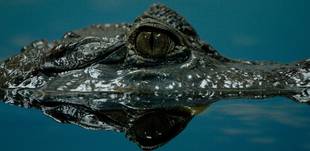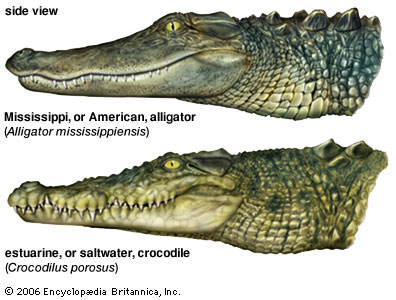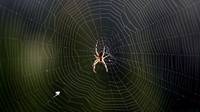
Alligators and crocodiles are both reptiles. The reptile order crocodylia encompasses all the known alligators, crocodiles, and caimans, sorted into about 27 different species and subspecies (including yet a fourth type of chomping creature, the endangered gharial). Alligators and caimans belong to their own family in the Crocodylia order (called, conveniently enough, alligatoridae) while crocodiles are in the crocodylidae family.
It's all in the snout. As a general rule, alligators have shorter, blunter, heavier heads than crocodiles, which have long, tapered snouts lined with sharp teeth. It's unlikely that you'll ever venture close enough to take a look at the difference. When a crocodile closes its mouth, the fourth tooth in the lower jaw sticks up outside the top jaw. When an alligator does the same thing, this tooth is hidden.

Crocodiles are endangered species while alligators are thriving, numbering in the millions in the United States alone. Alligators are only found in North America and parts of China; everywhere else, it's all crocodiles and caimans
Alligators prefer fresh or less saline abode. Crocodiles live in salty waters (but can also exist in fresh water). Crocodiles have special glands in their mouths that filter out excess salt.
Crocodiles are usually larger (and more aggressive) than alligators. For comparison's sake, the biggest American alligators can attain a length of about 15 feet, from snout to tail, while the largest crocodiles exceed 20 feet long. The largest crocodile on record was a 30-foot (nine meters) saltwater crocodile (Crocodylus porosus), weighing over 4,500 pounds, caught at Jala-Jala, Laguna de Bay in 1991.

















